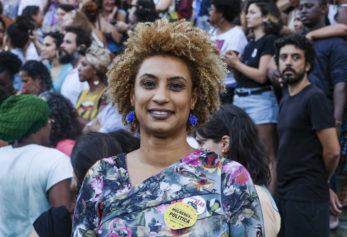Decades after the crack epidemic first hit the streets of America’s black communities, individuals and families are still struggling to recover from the devastating impact of the drug. In Brazil, the drug has had a similar effect, turning the population of low income areas into addicts.
Crack was introduced to the Rio de Janeiro region of Brazil around six years ago, transforming the shantytowns surrounding Brazil’s second largest city into “cracolandias” or cracklands. So infectious was the drug that the drug bosses responsible for the area’s drug trade have now taken it upon themselves to combat its spread.
In Mandela, one of the many Rio shantytowns recognized as slums, dealers sell their wares openly, employing local teenagers to serve as armed enforcers and traders. Customers can find powdered cocaine and marijuana sold in packs of $5, $10 and $25 from plain stands and tables set up on the street, a standard practice for Rio de Janeiro’s large drug market. However, on the streets of Mandela, crack no longer has a place in that market, a decision that came from the local dealers, rather than government or community pressure.
“Crack has been nothing but a disgrace for Rio. It’s time to stop,” the local drug boss told Herald Extra. The man serves as second-in-command in Mandela as a part of Rio’s most notorious gang, the Comando Vermelho, aka the Red Command. Though the 37-year-old man asked that his name not be published, he had no problem parading the streets in gold chains, carrying a backpack filled with over $100,000 in cash and drugs.
“I see this misery,” he added. “I’m a human being too, and I’m a leader here. I want to say I helped stop this.”
For the crack ban to fully take effect across Rio, Comando Vermelho would need the cooperation of the city’s two other reigning factions, the Amigos dos Amigos and the Terceiro Comando. Halting the sale of the drug would mean sacrificing millions in profits for the dealers, in a country where citizens are believed to consume between 800 kilos and 1.2 tons of crack everyday.
Flavia Froes, an attorney would represents some of Rio’s most infamous figures, reported that a number of the city’s smaller gangs were already on board, having seen the impact of crack on their own turf.
“They’re joining en masse. They realized that this experience with crack was not good, even though it was lucrative. The social costs were tremendous,” she said. “This wasn’t a drug for the rich; it was hitting their own communities.”
In shantytowns that have been largely abandoned by the government, the dealers are the ones who chose to step in and rectify their own mistakes.
“While stocks last, they’ll sell. But it’s not being bought anymore,” Froes added. “Today we can say with certainty that we’re looking at the end of crack in Rio de Janeiro.”


